Difference between revisions of "G470"
| (5 intermediate revisions by the same user not shown) | |||
| Line 1: | Line 1: | ||
{{GD Template Impl}} | {{GD Template Impl}} | ||
| + | [[File: IMG-8988-Dimension.jpg|right|thumb|G470 Screw Terminal Block Breakout Board]] | ||
| + | |||
==Overview== | ==Overview== | ||
| + | This G470 GPIO Test Terminal Block Breakout Board for Raspberry Pi is an easy-to-use expansion board designed to simplify wiring and connections for your Raspberry Pi projects. With labeled screw terminals for each GPIO pin, it provides a reliable way to connect external components without soldering, making it ideal for prototyping and development work. This breakout board is perfect for makers, hobbyists, and developers looking to simplify and improve the connectivity of their Raspberry Pi projects. | ||
==Features== | ==Features== | ||
| Line 14: | Line 17: | ||
* 1 x Screw Terminal Block Breakout Board (Model: G470), | * 1 x Screw Terminal Block Breakout Board (Model: G470), | ||
* 1 x Screws Pack | * 1 x Screws Pack | ||
| + | |||
| + | ==User Manual== | ||
| + | ===PCF8591=== | ||
| + | Test image version: 2022-04-04-raspios-bullseye-armhf.img Raspberry pi 4B | ||
| + | |||
| + | Enable I2C | ||
| + | |||
| + | sudo nano /boot/config.txt | ||
| + | |||
| + | [[File: Pi-sensor-board-01.png|400px]] | ||
| + | |||
| + | Ensure that I2C is on, and then restart the system. | ||
| + | |||
| + | sudo reboot | ||
| + | |||
| + | After restart, address 48 can be detected by I2C address detection command. | ||
| + | |||
| + | i2cdetect -y 1 | ||
| + | |||
| + | [[File: Pi-sensor-board-02.png|400px]] | ||
| + | |||
| + | Ensure that jumper caps are connected to PCF. | ||
| + | |||
| + | [[File:Rpi-all-gpio-test-board-b-03.jpg|400px]] | ||
| + | |||
| + | Download sample codepcf8591 | ||
| + | |||
| + | run command | ||
| + | cd pcf8591/ | ||
| + | |||
| + | sudo python pcf8591_adc.py | ||
| + | |||
| + | [[File: Pi-sensor-board-04.png|400px]] | ||
| + | |||
| + | Phenomenon: | ||
| + | |||
| + | 4-channel print AD value | ||
| + | |||
| + | DAC | ||
| + | |||
| + | run command | ||
| + | sudo python pcf8591_dac.py | ||
| + | |||
| + | [[File: Pi-sensor-board-05.png|400px]] | ||
| + | |||
| + | Phenomenon: | ||
| + | |||
| + | The LED lamp changes with the output value of DAC, and the brightness changes. | ||
| + | |||
| + | ===LED=== | ||
| + | Make sure that the jumper caps are connected to the LED. | ||
| + | |||
| + | [[File: Rpi-all-gpio-test-board-b-06.jpg|400px]] | ||
| + | |||
| + | Download GPIO_Test.py to raspberry pi. | ||
| + | |||
| + | run command | ||
| + | sudo python GPIO_Test.py | ||
| + | |||
| + | Phenomenon: | ||
| + | |||
| + | The power indicator LED is always on, and the GPIO connection LED is turned on in turn, and then turned off in turn, continuously circulating | ||
==FAQ== | ==FAQ== | ||
Revision as of 12:28, 6 November 2024
Overview
This G470 GPIO Test Terminal Block Breakout Board for Raspberry Pi is an easy-to-use expansion board designed to simplify wiring and connections for your Raspberry Pi projects. With labeled screw terminals for each GPIO pin, it provides a reliable way to connect external components without soldering, making it ideal for prototyping and development work. This breakout board is perfect for makers, hobbyists, and developers looking to simplify and improve the connectivity of their Raspberry Pi projects.
Features
- Model: G470
- Compatible with Raspberry Pi 4B / Pi 3B+ / Pi 3B / Pi Zero
- Based on Raspberry Pi 40pin design, suitable for beginners of Raspberry Pi
- Lead out all GPIO function pins, easy and convenient access to the Raspberry Pi GPIO
- On-board ADDA chip, can read AD signals, output DA signals
- LED shows the status information of GPIO Pins. When the GPIO pin is operated and effective in the terminal, the LED matrix on the right side of the terminal will display the status of the GPIO pin
- On-board industrial terminal block female port, terminal with interface definition sticker. More beautiful and practical
Packing List
- 1 x Screw Terminal Block Breakout Board (Model: G470),
- 1 x Screws Pack
User Manual
PCF8591
Test image version: 2022-04-04-raspios-bullseye-armhf.img Raspberry pi 4B
Enable I2C
sudo nano /boot/config.txt
Ensure that I2C is on, and then restart the system.
sudo reboot
After restart, address 48 can be detected by I2C address detection command.
i2cdetect -y 1
Ensure that jumper caps are connected to PCF.
Download sample codepcf8591
run command
cd pcf8591/
sudo python pcf8591_adc.py
Phenomenon:
4-channel print AD value
DAC
run command
sudo python pcf8591_dac.py
Phenomenon:
The LED lamp changes with the output value of DAC, and the brightness changes.
LED
Make sure that the jumper caps are connected to the LED.
Download GPIO_Test.py to raspberry pi.
run command
sudo python GPIO_Test.py
Phenomenon:
The power indicator LED is always on, and the GPIO connection LED is turned on in turn, and then turned off in turn, continuously circulating
FAQ
Q1: Question 1
A: Place the answer here.
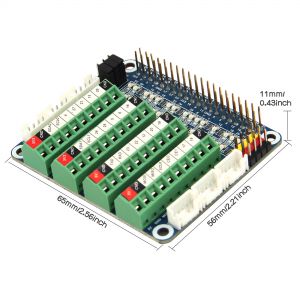

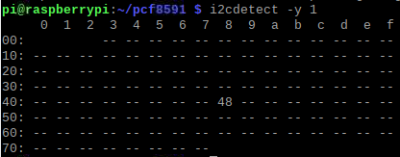
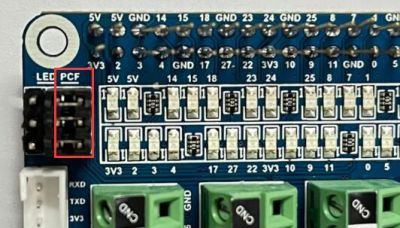
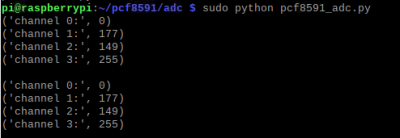

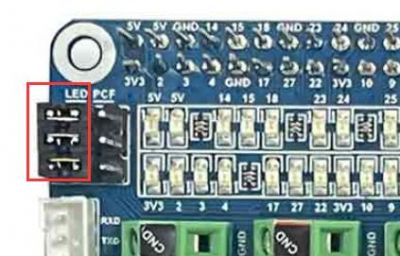
Enable comment auto-refresher